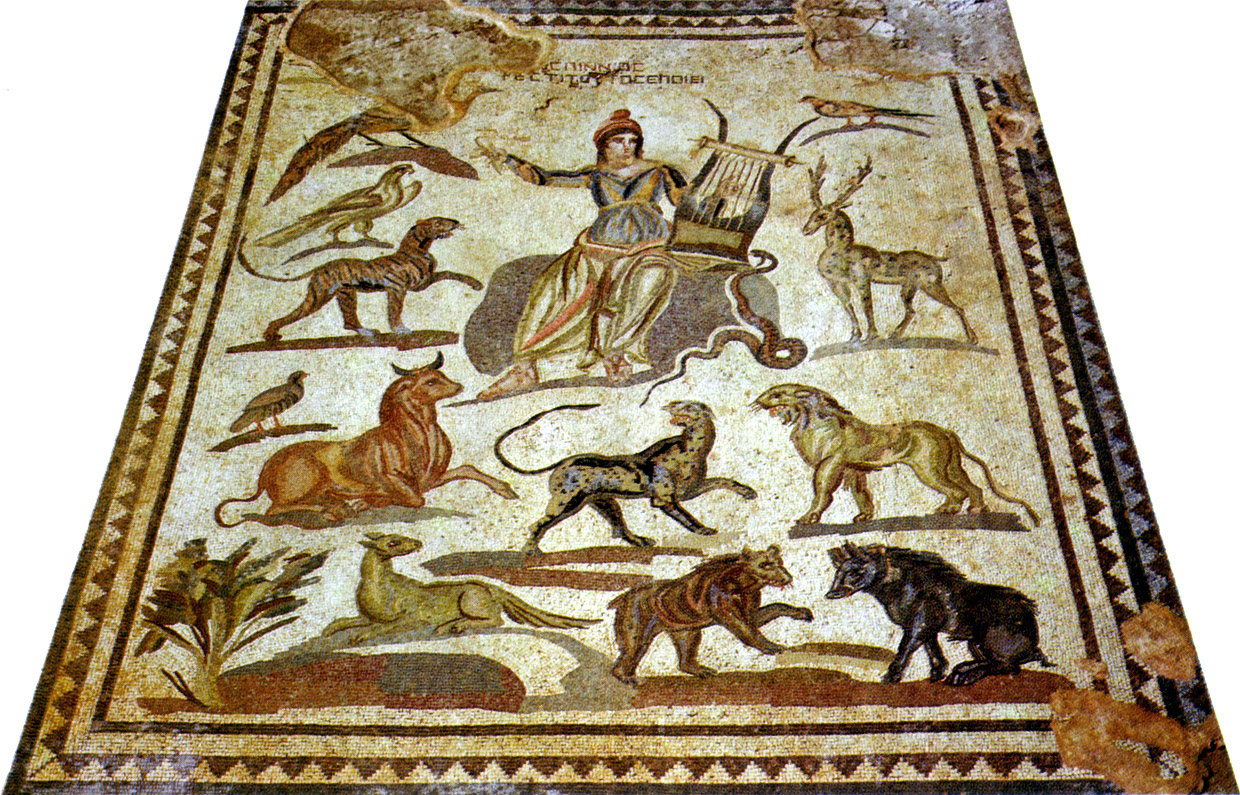
Orpheus and the beasts.
Paphos, Archaeological Park.
Orpheus is clad in elaborate clothes and wears a Phrygian cap. The beasts around him are (starting from the bottom left) a fox, a bear and a boar. On a higher register there is a seated cow, a leopard and a lion. Behind the cow there is a partridge, while on Orpheus’ left there is a tiger and on his right a deer. Next to the rock there is a large coiled snake. Higher up on the left there is an eagle, a peacock and fragments of another bird, while on the right there is a parrot (?) and the legs of yet another bird that cannot be identified.
The most important feature of this mosaic is the inscription that runs above Orpheus. It reads ΤΙΤΟΣ (or ΓΑΙΟΣ) ΠΙΝΝΙΟΣ ΡΕΣΤΙΤΟΥΤΟΣ ΕΠΟΙΕΙ, in other words, “Titus (or Gaius) Pinnius Restitutus made it”. This, however, does not necessarily mean that Restitutus was the artist that made the mosaic. In the period we are dealing with, to make something could equally well signify to pay for something to be made. In this case then, Titus Pinnius Restitutus would be the owner of the house. Whichever the exact meaning, such inscriptions are not all that common and this is the first one we know of from Roman Cyprus. It is interesting to note that although written in Greek characters, the name is Latin.